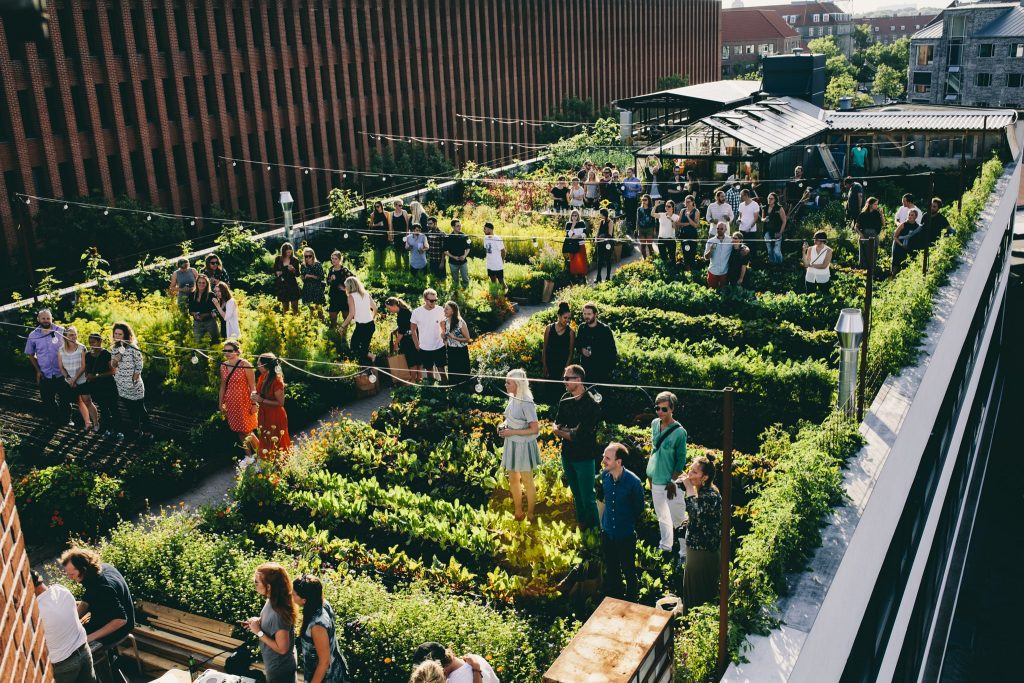Urban Rooftop Farming Utilizing Space For Local Food Production
Rooftop farming is a unique concept that is gaining popularity all over the world. It brings communities together and offers a range of opportunities for sustainable agriculture. One such example is the ØsterGRO rooftop farm in Copenhagen, Denmark. This innovative project showcases the potential of urban farming and inspires others to follow suit.

Located in the heart of Copenhagen, ØsterGRO rooftop farm is a shining example of how we can utilize rooftop spaces for agricultural purposes. The farm covers an area of 600 square meters and is home to a diverse range of crops. From fruits and vegetables to herbs and flowers, the farm produces a bounty of fresh produce for the local community.
What is impressive about rooftop farming is its ability to bring people together. The ØsterGRO farm not only provides a sustainable source of food but also serves as a gathering space for the community. People from all walks of life come together to learn, share knowledge, and participate in the farm's activities.
What is rooftop farming?
Rooftop farming, also known as urban farming, involves growing crops on rooftops of buildings. It utilizes unused or underutilized spaces in urban areas to create green oases and promote sustainability. This practice has gained traction in recent years due to its numerous benefits.
One of the key advantages of rooftop farming is its positive impact on the environment. By utilizing rooftops for agriculture, we can reduce the urban heat island effect and mitigate the negative effects of climate change. Rooftop farms also play a crucial role in improving air quality and reducing CO2 emissions.
Ideas for rooftop farming are endless. From small-scale community gardens to commercial farms, there is a wide range of possibilities to explore. Here are some innovative ideas for rooftop farming:
Ideas for rooftop farming
- Vertical farming: Utilize vertical space by growing crops in stacked layers using hydroponic or aeroponic systems.
- Aquaponics: Combine fish farming with hydroponics to create a self-sustaining ecosystem.
- Herb and spice gardens: Grow an assortment of culinary herbs and spices for local restaurants and households.
- Apiaries: Install beehives to promote pollination and produce rooftop honey.
- Microgreens production: Cultivate nutrient-rich microgreens for the local market.
Rooftop farming offers several benefits, but it also comes with challenges. One of the main obstacles is the limited space available for cultivation. However, with careful planning and innovative techniques, these challenges can be overcome.
Recommendations for successful rooftop farming
1. Start Small: Begin with a small-scale rooftop farm to understand the challenges and dynamics of urban agriculture.
2. Soil and Irrigation: Ensure proper soil quality and efficient irrigation systems to optimize crop growth. Consider using lightweight soil mixes and drip irrigation techniques.
3. Crop Selection: Choose crops that are well-suited for rooftop farming, such as leafy greens, herbs, and small-fruited vegetables.
4. Pest Control: Implement effective pest control measures to protect crops from pests and diseases. Explore organic and biological pest control methods.
5. Community Engagement: Involve the local community in the rooftop farming project. Organize workshops, educational events, and volunteer opportunities to foster community participation.
Listicle of benefits of rooftop farming
- Improved access to fresh produce
- Reduces food miles and carbon footprint
- Enhanced urban biodiversity
- Creation of green spaces in concrete jungles
- Positive impact on mental health and well-being
- Engagement and education for children
- Job creation and economic opportunities
- Promotes sustainable and resilient cities
- Contributes to food security
- Supports local and organic agriculture
Question & Answer: FAQs about rooftop farming
- Q: Can rooftop farming be implemented in any city?
- A: Rooftop farming can be implemented in most urban areas, regardless of their size. However, it is crucial to consider structural and safety aspects before initiating a rooftop farm.
- Q: Does rooftop farming require a significant investment?
- A: The initial setup cost for rooftop farming can vary depending on the scale and complexity of the project. However, the long-term benefits outweigh the initial investment.
- Q: How can rooftop farming contribute to food security?
- A: Rooftop farming reduces the distance between food production and consumption, ensuring fresher and more nutritious produce. It can also provide a sustainable source of food in areas with limited access to fresh produce.
- Q: What are the limitations of rooftop farming?
- A: Limited space, structural considerations, and the availability of resources such as water and sunlight are some of the limitations of rooftop farming. However, with proper planning and innovation, these challenges can be addressed.
- Q: Is rooftop farming only suitable for commercial purposes?
- A: Rooftop farming can be adapted for both commercial and community purposes. It offers opportunities for individuals, restaurants, and local communities to grow their own food and contribute to a sustainable food system.
Summary
Rooftop farming has emerged as a promising solution to the challenges of urban agriculture. It not only provides fresh and nutritious produce but also promotes community engagement, environmental sustainability, and economic opportunities. From ØsterGRO farm in Copenhagen to various rooftop farming initiatives around the world, these projects showcase the potential of utilizing unused spaces for agricultural purposes.
By implementing rooftop farming, we can create thriving green spaces in the midst of concrete jungles and improve the quality of life for urban dwellers. It is a sustainable and forward-thinking approach to food production that has the potential to revolutionize our cities.




Post a Comment for "Urban Rooftop Farming Utilizing Space For Local Food Production"